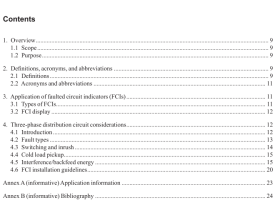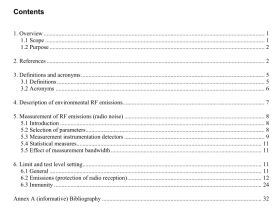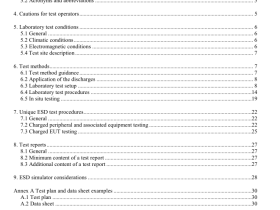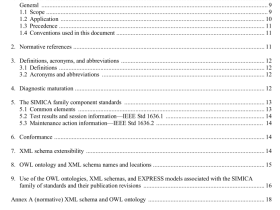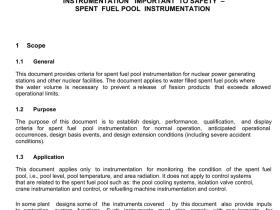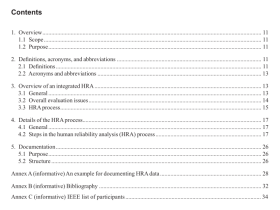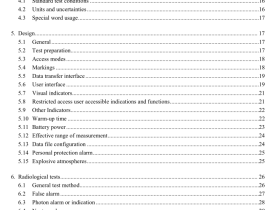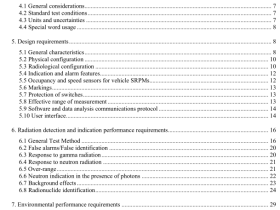IEEE PC37.30.5 pdf download
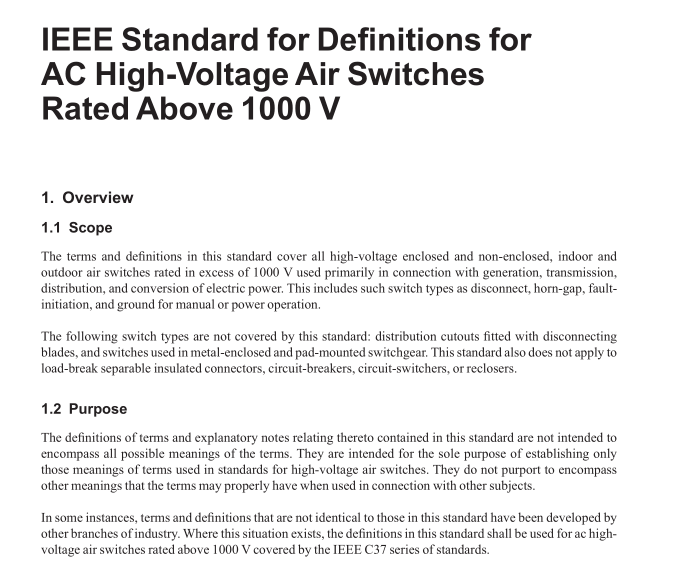
IEEE PC37.30.5 pdf download IEEE Standard for Defnitions for AC High-Voltage Air Switches Rated Above 1000 V
1. Overview1.1 Scope
The terms and definitions in this standard cover all high-voltage enclosed and non-enclosed,indoor andoutdoor air switches rated in excess of 1000 V used primarily in connection with generation, transmission,distribution, and conversion of electric power. This includes such switch types as disconnect, horn-gap, fault-initiation, and ground for manual or power operation.
The following switch types are not covered by this standard: distribution cutouts fitted with disconnectingblades, and switches used in metal-enclosed and pad-mounted switchgear. This standard also does not apply toload-break separable insulated connectors, circuit-breakers, circuit-switchers, or reclosers.
1.2 Purpose
The definitions of terms and explanatory notes relating thereto contained in this standard are not intended toencompass all possible meanings of the terms. They are intended for the sole purpose of establishing onlythose meanings of terms used in standards for high-voltage air switches. They do not purport to encompassother meanings that the terms may properly have when used in connection with other subjects.
In some instances, terms and definitions that are not identical to those in this standard have been developed byother branches of industry. Where this situation exists, the definitions in this standard shall be used for ac high-voltage air switches rated above 1000 v covered by the IEEE C37 series of standards.
2. Definitions
For the purposes of this document, the following terms and definitions apply. The IEEE Standards DictionaryOnline should be consulted for terms not defined in this clause.2
accessories: Devices that perform a secondary or minor duty as an adjunct or refinement to the primary ormajor duty of a unit of equipment.
air switch: A switching device designed to close and open one or more electric circuits by means of guidedseparable contacts that separate in air.
arc reach:The distance from a point midway between the arc extremities to the most remote point of the arc atthe time of its maximum length.
arcing horn:One of a pair of diverging electrodes on which an arc is extended to the point of extinction afterthe main contacts of the switching device have parted.
attachments: Accessories to be attached to switchgear apparatus, as distinguished from auxiliaries.
bell crank: A lever with two arms placed at an angle diverging from a given point, thus changing the directionof motion of a mechanism.
bell crank hanger: A support for a bell crank.
blade(disconnecting blade)(of a switching device): The moving contact member that enters or embracesthe contact clips.
blade guide (switch): An attachment to help assist in proper alignment of the blade and contact clip whenclosing the switch.
blade latch: A latch used on a switch to hold the switch blade in the closed position.
break distance(of a switching device): The minimum open-gap distance between the main-circuit contacts,or live parts connected thereto, when the contacts are in the open position.
bus support: An insulating support for a bus. It includes one or more insulator units with fittings for fasteningto the mounting structure and for receiving the bus.
center break switching device: A mechanical switching device in which both contacts are moveable andengage at a point substantially midway between their supports.
clips: See: contact clips (of a mechanical switching device).
closing operating time (of a switch): The interval of time during which the contacts move from the fully openposition to the fully closed position.
conducting mechanical joint: The juncture of two or more conducting surfaces held together by mechanicalmeans.
conductive outrigger (of a switching device terminal): An attachment that is fastened to and extends theterminal pad of a switching device to maintain electrical clearance between the conductor and other parts.
connecting rod or shaft: A component of a switch operating mechanism designed to transmit motion from anoffset bearing assembly or bell crank to a switch pole unit.
contact: A conducting part that coacts with another conducting part to make or break a circuit.
contact clip(of a mechanical switching device): The clip that the blade enters or embraces.
contact position indicator: A device that is located at or near the operating mechanism to indicate whetherthe main contacts are in the closed or open position. Typically, colors are used to indicate a closed or openposition; red will typically signify closed and green will typically signify open.
contact surface: That surface of a contact through which current is transferred to the coacting contact.
